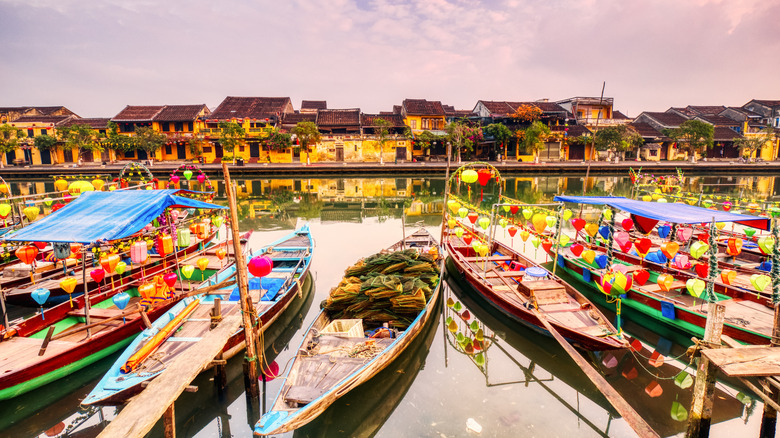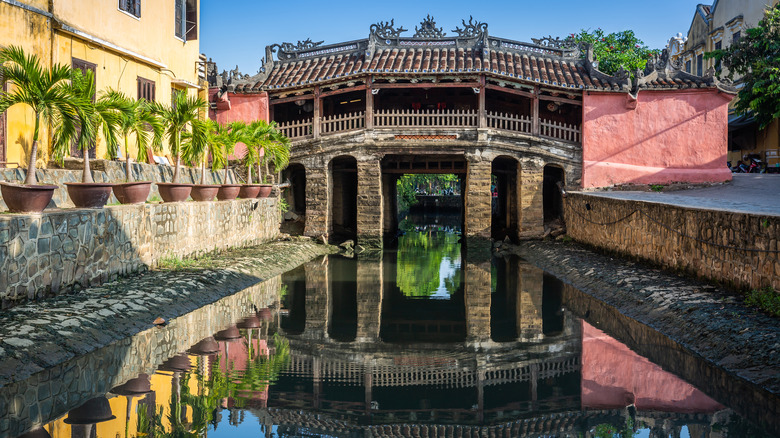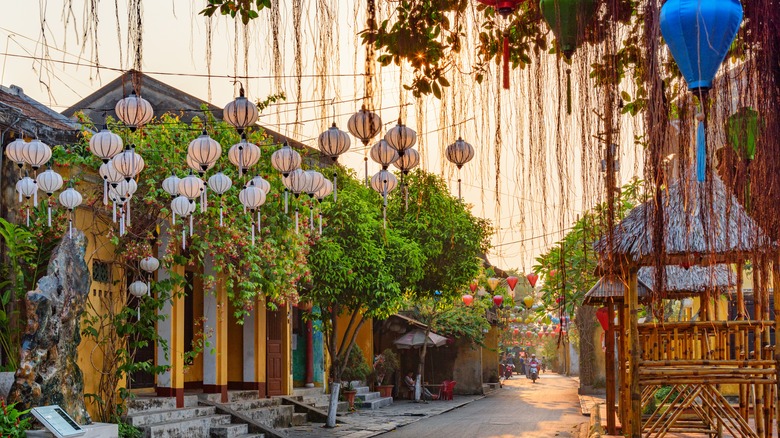Hoi An, Vietnam Offers Visitors A Rare Chance To Explore An Ancient Port City
When UNESCO calls a place "exceptionally well-preserved," you know it's something special. That's the description they've given to Hoi An, an ancient port city in central Vietnam, where you'll feel like little has changed since its days as a major trading center. Wandering the cobbled streets past traditional yellow houses and watching the lanterns light up as dusk falls, you'll easily see why Central Vietnam Guide calls this the "prettiest town [in] the country."
However, Hoi An didn't win its place on the UNESCO World Heritage list just for being incredibly charming. It made it to the list as a traditional Asian port that exhibits a blend of cultures. Not only can you see Indigenous influences in the city, but Chinese, Japanese, and European cultures have shaped the architecture too (per UNESCO.) And these influences had a long time to develop in Hoi An, as it was an active port from the 15th to the 19th centuries.
A blend of cultures
Hoi An Now paints a glorious picture of the city at its peak as one of Southeast Asia's busiest ports. From the late 15th century, Japanese and Chinese traders came to buy ceramics and silk (Hoi An is still a center for clothing production, per Vietnam Discovery), and Europeans jostled for spices and other materials. The wide estuary in Hoi An allowed easy access for ships, and the port boomed.
You can see many of these foreign influences as you wander around the alluring area. Central Vietnam Guide writes that the streets are a jumble of architectural styles: assembly halls and temples, chapels and memorials, pagodas, and bridges. One of the best places to see the fusion of local, Japanese, and Chinese cultures is the Tan Ky Family House, according to Vietnam Discovery. This elaborately decorated merchant's house dates back to the 18th century and is open to visitors.
For more of the Japanese influence, Vietnam Discovery loves the Japanese Covered Bridge. Here, you'll see a bridge with ornately carved sculptures with a wooden pagoda-style roof. Coming off the bridge, you'll arrive at the Phung Hung Old House with its mix of Japanese and Chinese styles. The guide also urges you to see many of the Chinese-style buildings in the city, including the Fujian Assembly Hall and the compelling Quan Cong temple.
Discovering more in Hoi An
It's not just the major attractions that you should be looking out for in Hoi An, though. UNESCO lists 1,107 timber structures in Hoi An Ancient Town, with many of the houses bearing traditional wooden carvings. The streets are pedestrian, so simply wandering through town will transport you back to its era as a leading port city. You'll pass many buildings that back onto the river, allowing easy access for importing and exporting goods.
The diverse influences on the city are also reflected in its cuisine. Banh mì (Vietnamese sandwiches) are an absolute must-eat, according to Girl Eat World, reflecting the French influence on the area, while com ga puts a Vietnamese twist on the famous Hainanese chicken rice. A big recommendation from Vin Pearl is to eat cao lao, which blends Vietnamese, Chinese, and Japanese cuisine. The pork and noodle dish is traditionally only available in Hoi An, so don't miss it while you're in the city. From the architecture and the shopping to the food, Hoi An synthesizes Indigenous and colonial influences to create a uniquely unforgettable stop on your Vietnam itinerary.


